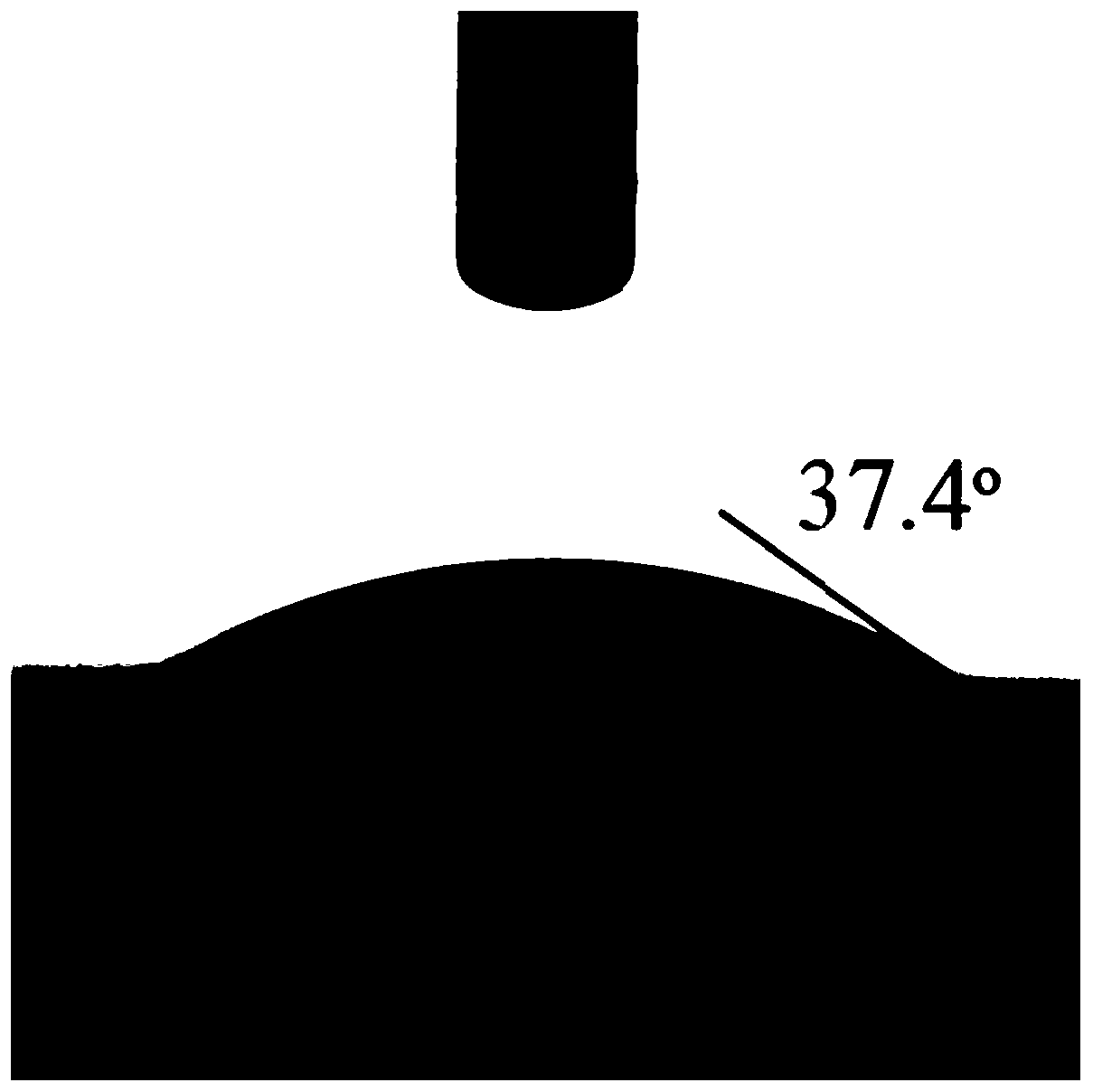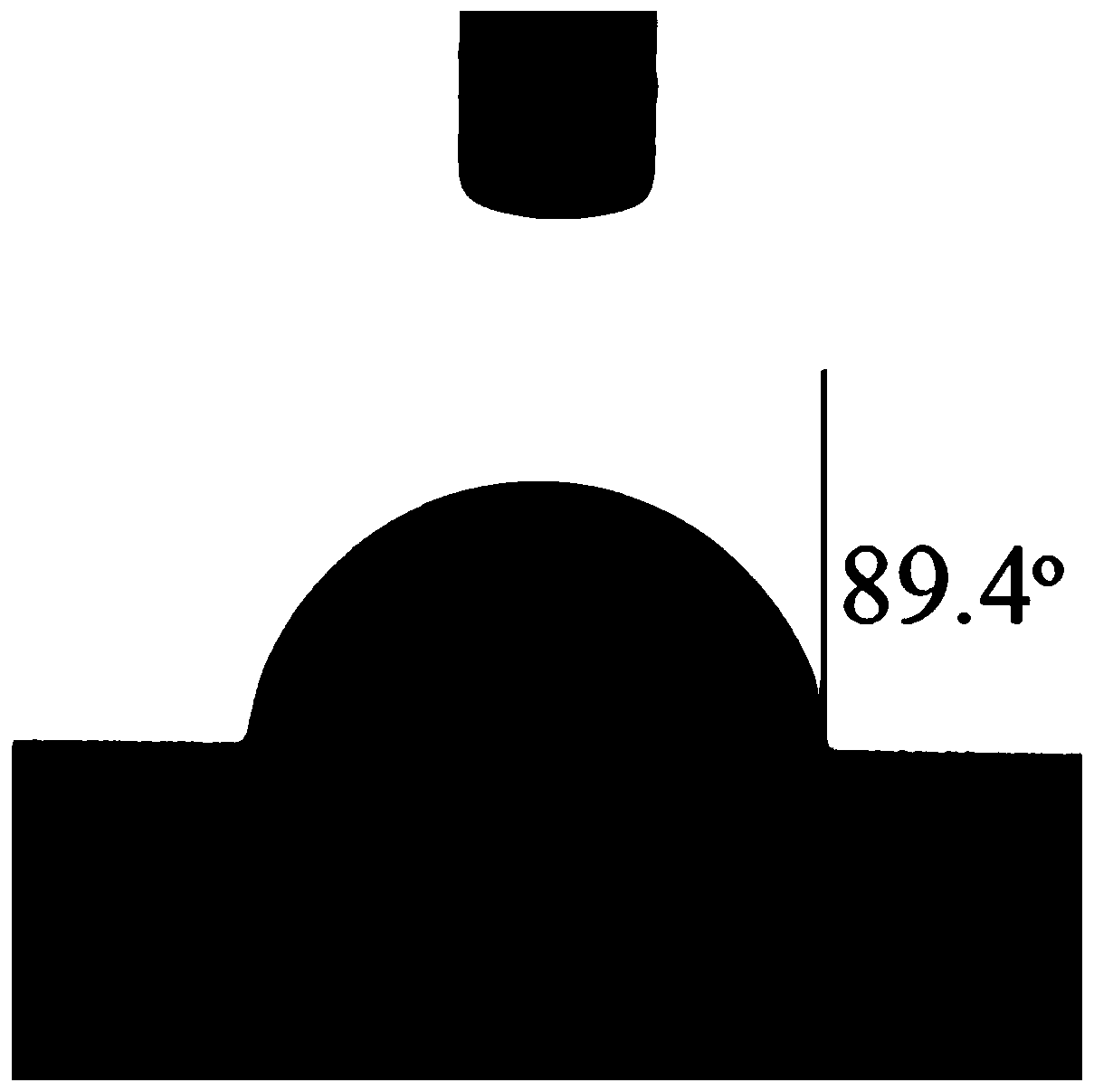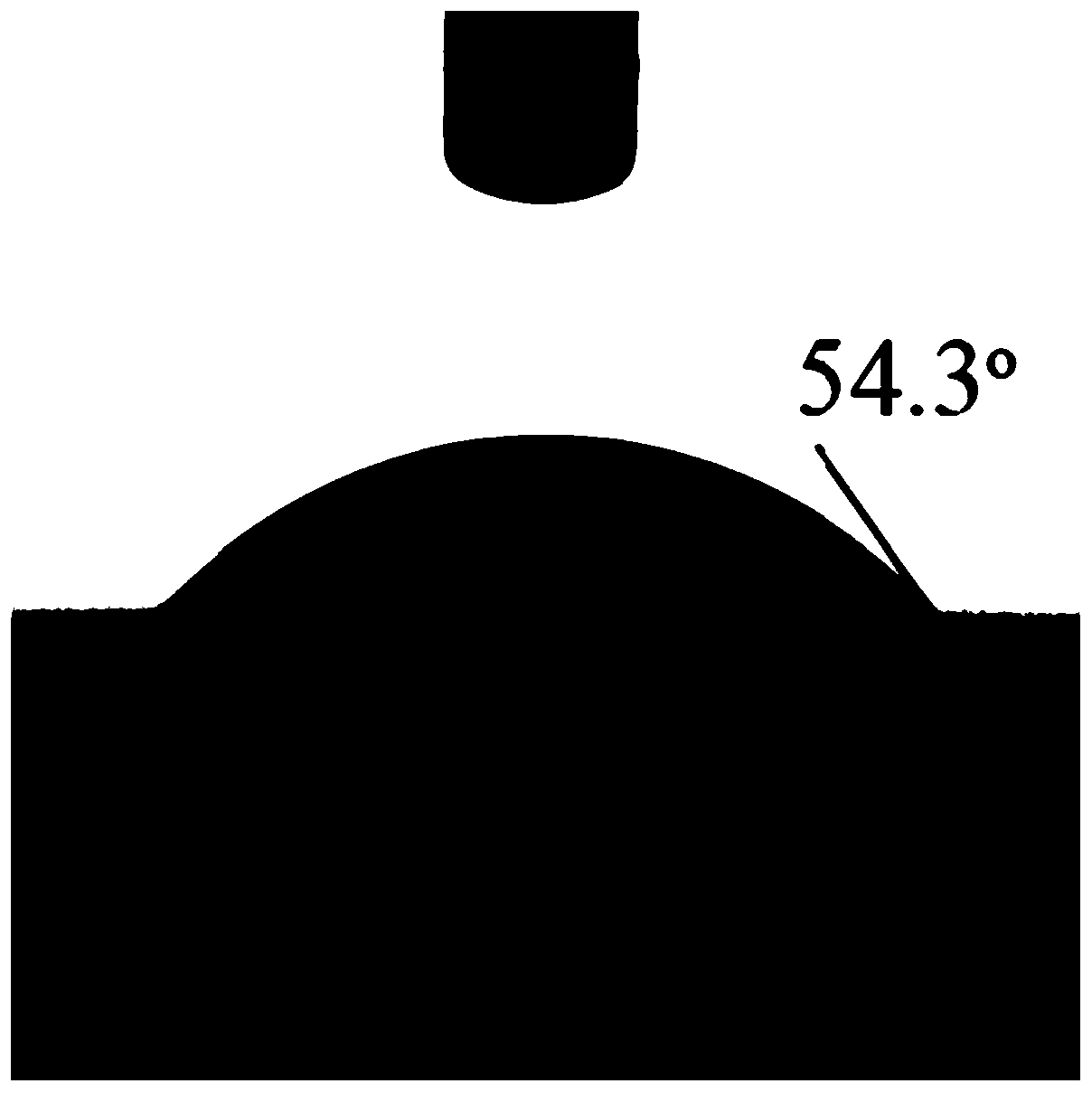Silicon wafer surface treatment method for graphene in-situ growth
An in-situ growth, silicon wafer surface technology, used in electrical components, semiconductor/solid-state device manufacturing, circuits, etc., to achieve the effect of improving capacity, helping mass production, and repeating the method
- Summary
- Abstract
- Description
- Claims
- Application Information
AI Technical Summary
Problems solved by technology
Method used
Image
Examples
Embodiment 1
[0035] The silicon chip surface treatment method that is used for graphene in-situ growth of the present embodiment specifically comprises the following steps:
[0036] (1) Take (100) silicon wafers for growth, place them in deionized water for simple ultrasonic cleaning for 1 min, and then immerse in dilute hydrofluoric acid with a volume ratio of 1:100 for 1 min;
[0037] (2) Take out the silicon wafer, rinse the surface with deionized water, and dry it with 0.5MPa high-pressure nitrogen;
[0038] (3) Immerse the silicon wafer in 0.1M p-diphenol methanol solution for 1 hour;
[0039] (4) Take out the silicon chip and rinse it three times with absolute ethanol solution;
[0040] (5) After rinsing, the silicon wafer was blown dry with 0.5MPa high-pressure nitrogen, placed in a tube furnace, and grown graphene by chemical vapor deposition for 30 minutes to obtain a large number of graphene crystal nuclei.
[0041] The water contact angle measuring instrument was used to chara...
Embodiment 2
[0046] The silicon chip surface treatment method that is used for graphene in-situ growth of the present embodiment specifically comprises the following steps:
[0047] (1) Take (100) silicon wafers for growth, place them in deionized water for simple ultrasonic cleaning for 1 min, and then immerse in dilute hydrofluoric acid with a volume ratio of 1:50 for 1 min;
[0048] (2) Take out the silicon wafer, rinse the surface with deionized water, and dry it with 0.5MPa argon;
[0049] (3) Immerse the silicon wafer in 0.1M phenol-methanol solution for 1 hour;
[0050] (4) Take out the silicon chip and rinse it three times with absolute ethanol solution;
[0051] (5) After rinsing, the silicon wafer was blown dry with 0.5 MPa argon gas for the preparation of graphene.
Embodiment 3
[0053] The silicon chip surface treatment method that is used for graphene in-situ growth of the present embodiment specifically comprises the following steps:
[0054] (1) Take the (111) silicon wafer for growth, place it in deionized water for simple ultrasonic cleaning for 1 min, and then immerse it in dilute hydrofluoric acid with a volume ratio of 1:30 for 1 min;
[0055] (2) Take out the silicon wafer, rinse the surface with deionized water, and dry it with 1MPa argon;
[0056] (3) Immerse the silicon wafer in 0.2M resorcinol methanol solution for 30min;
[0057] (4) Take out the silicon chip and rinse it three times with absolute ethanol solution;
[0058] (5) After rinsing, the silicon wafer was blown dry with 1 MPa argon gas for the preparation of graphene.
PUM
 Login to View More
Login to View More Abstract
Description
Claims
Application Information
 Login to View More
Login to View More - R&D
- Intellectual Property
- Life Sciences
- Materials
- Tech Scout
- Unparalleled Data Quality
- Higher Quality Content
- 60% Fewer Hallucinations
Browse by: Latest US Patents, China's latest patents, Technical Efficacy Thesaurus, Application Domain, Technology Topic, Popular Technical Reports.
© 2025 PatSnap. All rights reserved.Legal|Privacy policy|Modern Slavery Act Transparency Statement|Sitemap|About US| Contact US: help@patsnap.com



